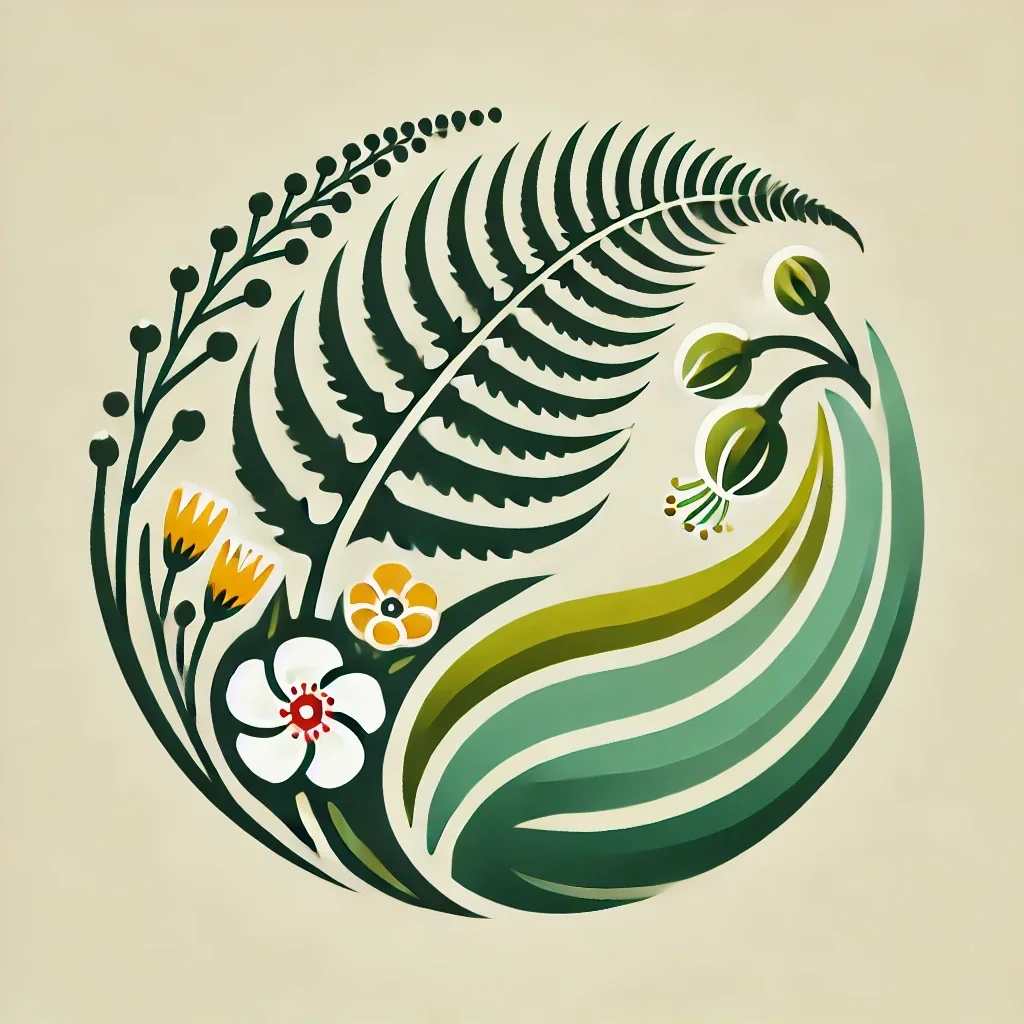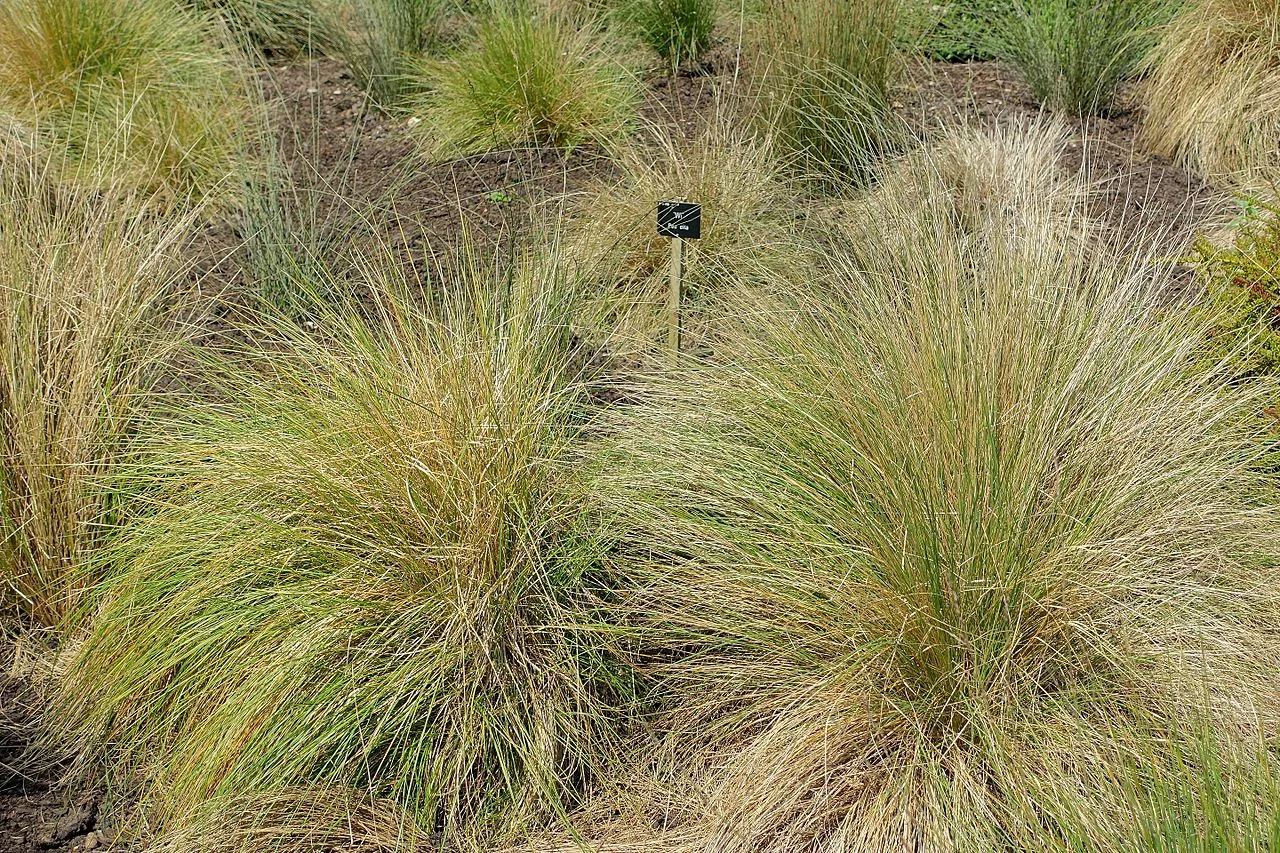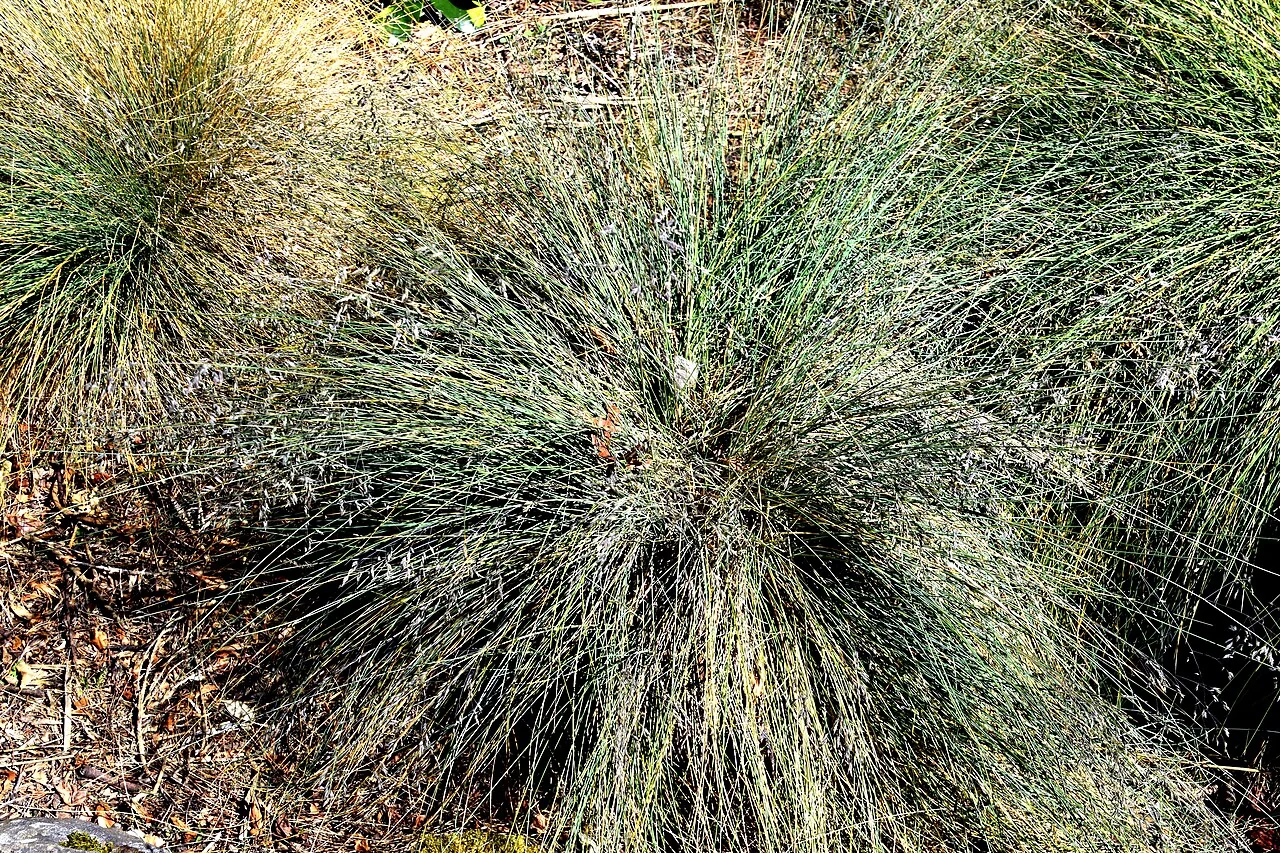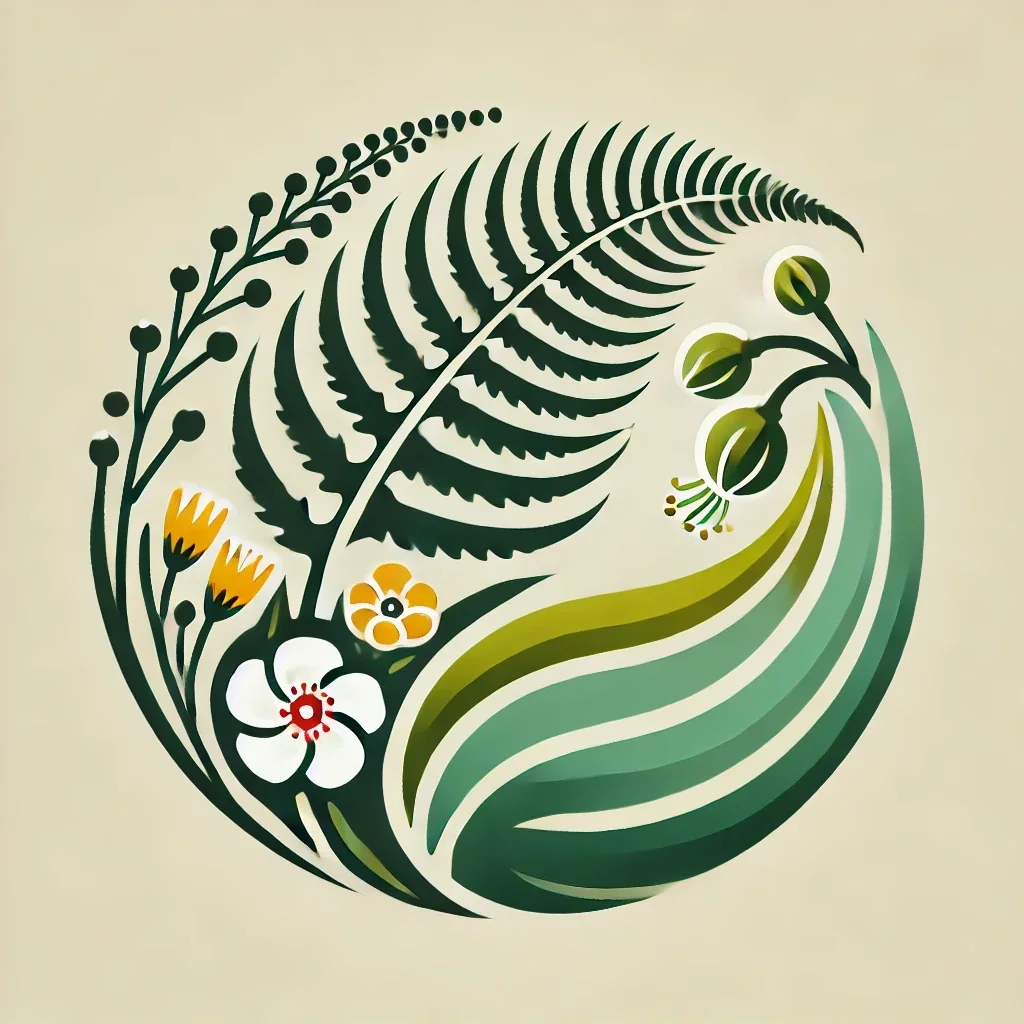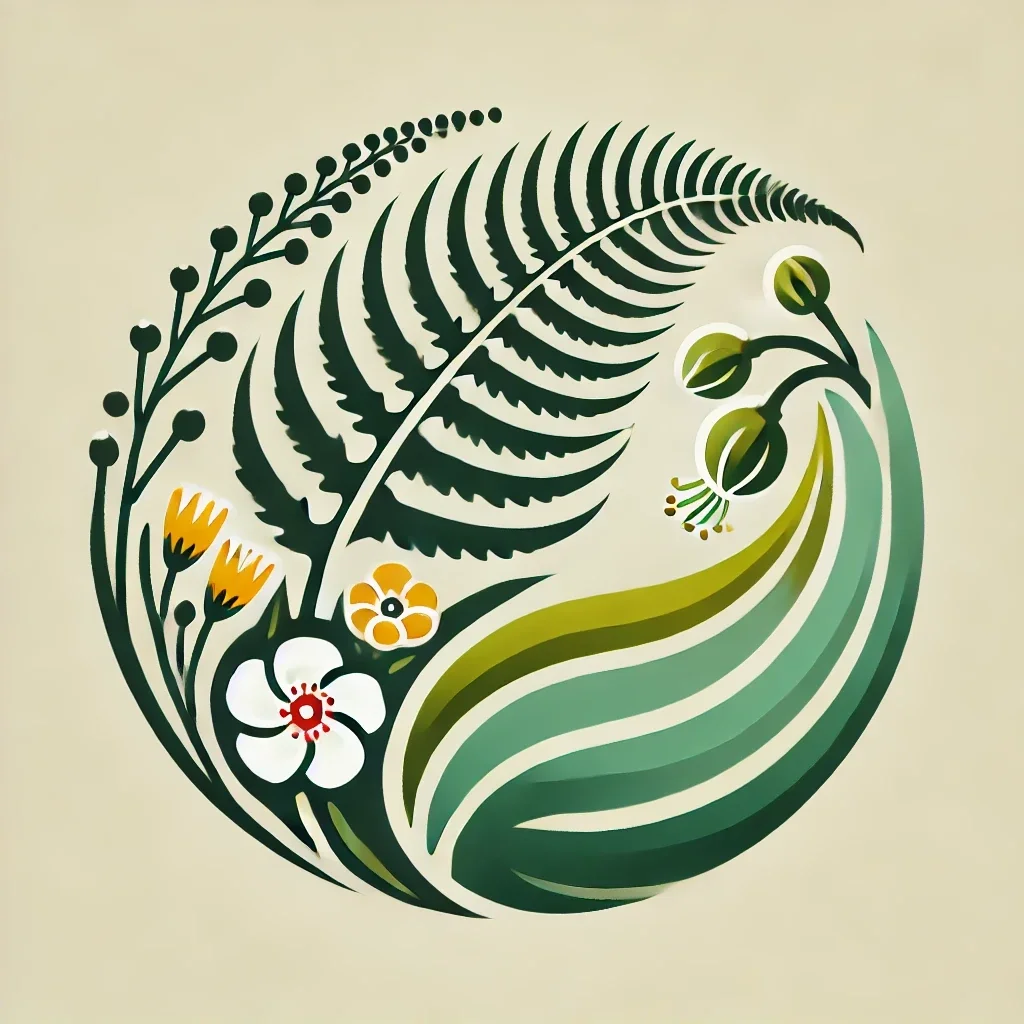
Blue Shore Tussock
Poa astonii
Poa astonii , commonly known as Blue Shore Tussock or Coastal Tussock Grass, is a distinctive perennial grass native to New Zealand's southern regions. This hardy species grows to 35cm high, forming tightly packed, small, glaucous tussocks with fine blue-green foliage that spreads in narrow fans from slender rhizomes. Found primarily on the southern coasts of South Island, Stewart Island, and smaller southern islands, this resilient grass thrives in some of New Zealand's most challenging coastal environments. The plant's wiry leaves are pale glaucous-tinted and arching, measuring 5-40cm long and only 0.5-1mm in diameter, perfectly adapted to withstand heavy winds and salt spray that characterize its natural habitat.

Plant Description
Poa astonii is a wiry, fine-leaved native bluegrass forming small tussocks with delicate, open panicles. Endemic to southern coastal regions and valued for drought tolerance and salt tolerance.
Quick Facts
| Common Names | Blue Shore Tussock, Coastal Tussock Grass |
|---|---|
| Scientific Name | Poa Astonii |
| Family | Poaceae (Grass family) |
| Growth Form | Perennial tussock grass |
| Height | 10-35cm tall |
| Spread | Forms narrow tussocks from rhizomes |
| Water Needs | Low to moderate - very drought tolerant |
| Light | Full sun to partial shade |
| Soil | Well-drained, tolerates poor soils and salt |
| Frost Tolerance | Very hardy - tolerates severe frosts |
| Salt Tolerance | Excellent - highly salt tolerant |
| Growth Rate | Moderate - steady establishment |
| Lifespan | Long-lived perennial |
| Flowers | Compact panicles, pale green in summer, light straw-coloured in seed |
| Flowering Time | Summer |
| Conservation Status | Not Threatened (habitat loss in some areas) |
| Distribution | Southern South Island, Stewart Island, smaller southern islands |
| Habitat | Coastal tussockland, exposed rocky headlands, low alpine sites |
| Special Features | Excellent pioneer species, erosion control, extremely hardy |
Climate Best Suited to
Dry, sunny, wind-swept sites; hardy to frost; thrives on free-draining, low-fertility soils.
Regional Suitability
| City | Climate Suitability |
|---|---|
| Whangārei | Ideal |
| Auckland | Ideal |
| Hamilton | Ideal |
| Tauranga | Ideal |
| Rotorua | Ideal |
| Gisborne | Ideal |
| New Plymouth | Ideal |
| Napier | Ideal |
| Whanganui | Ideal |
| Palmerston North | Ideal |
| Wellington | Ideal |
| Nelson | Ideal |
| Christchurch | Ideal |
| Dunedin | Ideal |
| Invercargill | Ideal |
Natural Habitat
Open, stony ground and dry grasslands of southern coastal regions.
On dry, wind-scoured terraces and stony downs of the southern coastal areas, this fine-leaved bluegrass weaves through divaricating shrubs and open scrubland. It prefers lean, freely draining ground with full sun and fierce air movement that keeps growth compact and durable.
Plant Conservation
Conservation Status
Poa astonii currently has a conservation status of "Not Threatened" under the New Zealand Threat Classification System. However, like many coastal species, it faces ongoing challenges from habitat modification and coastal development pressures.
Habitat Loss Concerns
While not currently threatened, the natural tussocklands dominated by coastal tussock species now remain only as fragments on exposed rocky headlands of areas like Bluff Hill and the Catlins Coast. This represents significant habitat loss from the species' historical range, though remaining populations appear stable in protected coastal areas.
Ecological Importance
Blue Shore Tussock plays a crucial role in coastal ecosystem stability, providing erosion control and habitat structure in harsh maritime environments. The species serves as an excellent pioneer, helping to stabilize disturbed coastal sites and creating conditions for other native plants to establish.
Conservation Efforts
Conservation efforts focus on protecting remaining coastal tussockland fragments and promoting the species' use in coastal restoration projects. Seeds are commercially available, supporting both conservation plantings and gardeners interested in cultivating this hardy native grass.
How to Grow
In rocky crevices, tuck small stones among roots to anchor plants and speed establishment in drying winds.
Provide the brightest exposure and vigorous air movement to keep foliage fine; shade or rich soil encourages lax, coarse growth.
Planting Guide
Best Planting Practices
Plant on slopes/berms; avoid fertiliser and irrigation once established; space 0.4-0.6 m.
Prepare gritty mounds or scree beds; set crowns slightly high to shed water. Water in deeply, then allow the soil to breathe before the next soak. Stake lightly in very exposed sites until roots anchor. Keep weeds down with angular gravel that also reflects heat and keeps foliage tight.
Ecology
Supports dryland invertebrates; open structure allows interplanting with divaricates.
Tufts create sheltering interstices for spiders and beetles; the open habit admits light to the ground layer, promoting a diverse dryland flora. Combined with thorny divaricates it provides valuable cover for lizards in pastoral landscapes.
Uses
Dry garden matrix, rock gardens and low xeric meadows.
Its wiry, bluish leaves lend fine contrast to bold divaricates and low hebes, reading well in gravel gardens and minimal, waterwise planting.
Landscaping Ideas
Combine with Muehlenbeckia astonii , alpine hebes and Chionochloa for eastern dryland schemes.
Thread between rocks and Muehlenbeckia for a wild dryland matrix; repeat at irregular spacings to mimic natural clumping along sunny banks.
Seasonal Care
Late Winter
Comb out thatch; avoid hard cutting.
In the first summer, water deeply and infrequently to drive roots; comb out thatch at winter's end to refresh the dome without shearing.
Pruning
Pruning Techniques
Remove spent stems; do not cut into crowns.
Avoid hard cuts into the crown; instead, remove weathered leaves a few at a time to preserve the plant's natural fountain form.
How to Grow Blue Shore Tussock
Blue Shore Tussock grows best when you match its natural habitat: prepare well-drained soil, get the light right, water steadily, and protect from extremes during establishment. This hardy coastal grass requires excellent drainage and tolerates salt spray, making it ideal for exposed coastal gardens where few other grasses will thrive. Site selection is critical for success, as waterlogged conditions will quickly kill this specialized coastal species.
Seed
Blue Shore Tussock produces seeds that can be collected in late summer to early autumn when the seed heads mature and turn golden brown. Fresh seed germinates most readily when sown immediately after collection onto a free-draining seed-raising mix combined with coarse sand. Maintain consistent moisture without waterlogging, providing bright light but protection from harsh direct sun during germination. Seeds typically germinate within 2-4 weeks at temperatures around 15-20°C. The species naturally relies on wind dispersal, so collected seeds should be sown promptly before they lose viability. Young seedlings grow slowly initially but establish reliable root systems when given appropriate coastal conditions with excellent drainage and exposure to salt-laden winds.
Division
Established Blue Shore Tussock clumps can be carefully divided in early spring as new growth begins, though this should be done sparingly as the species dislikes root disturbance. Select mature, healthy clumps at least 3-4 years old and use sharp, clean tools to separate sections with good root systems and multiple growing points. Each division should retain sufficient roots to support the foliage load during establishment. Replant immediately at the same depth in well-prepared, free-draining soil and water gently to settle without creating waterlogged conditions. Divisions establish more slowly than seedlings and may take a full growing season to show vigorous new growth, requiring patient care and protection from extreme weather during their first year.
Establishment Care
Young Blue Shore Tussock plants require careful establishment management to replicate their specialized coastal habitat requirements. Dig wide planting holes in elevated, well-drained positions that receive full sun and good air circulation. Set plants at their original depth and backfill with a mixture of existing soil and coarse sand to improve drainage. Water to settle soil around roots, then mulch with stones, shells, or gravel to moderate temperature swings and suppress competing weeds while allowing excellent drainage. Avoid organic mulches that retain moisture and can cause crown rot. Feed sparingly if at all, as this species is adapted to nutrient-poor coastal soils and excessive fertilization can lead to soft, pest-susceptible growth that compromises the plant's natural hardiness and distinctive blue-green coloration.
Pests and Diseases
Resilient in Harsh Environments
- General Hardiness: Poa astonii is generally robust and resistant to most common pests and diseases, especially when grown in its preferred well-drained, exposed conditions.
- Crown Rot: Like many grasses, it can be susceptible to crown rot if planted in poorly drained or overly wet soils. Ensuring excellent drainage is key to prevention.
- Browsing: In natural habitats, it may be subject to browsing by herbivores, but this is less common in cultivated settings.
Maintaining good air circulation and avoiding overwatering are the best preventative measures to keep Poa astonii healthy and thriving.
Cultural Significance
Traditional Uses and Values
Blue Shore Tussock represents an important component of New Zealand's coastal grassland heritage, forming part of the distinctive tussockland ecosystems that once dominated much of the country's exposed coastal areas. This hardy grass exemplifies the remarkable adaptations that have evolved in New Zealand's native flora to cope with challenging environmental conditions.
The species holds particular significance in the context of New Zealand's unique grassland evolution. Unlike other continents where grasses dominate vast areas, New Zealand's forested history restricted native grasses to specialized habitats - forest floors and margins, or areas unsuitable for forest growth such as wetlands, coastal sand dunes, cliffs, high-altitude areas, very dry areas, and mineral soils.
In modern conservation and horticulture, Blue Shore Tussock has gained recognition as one of the most successful native grasses for cultivation. While New Zealand produces no commercial seed of native grasses for agriculture, and most natives fail to compete in mown turf or grazed pasture, Poa astonii stands out as a species that has proven adaptable to garden cultivation while maintaining its wild characteristics.
The grass also serves as a symbol of resilience and adaptation, thriving in the harsh coastal environments that characterize much of New Zealand's coastline. Its cultivation helps preserve genetic material while providing gardeners with an authentic piece of New Zealand's coastal heritage that can withstand the challenges of exposed coastal gardening.
Bonus Tip
Expert Growing Advice
Best colour and tight habit occur on the leanest, sunniest sites.
On the hottest slopes, a pale stone mulch reduces soil heat swings and keeps foliage tight without adding fertility.
